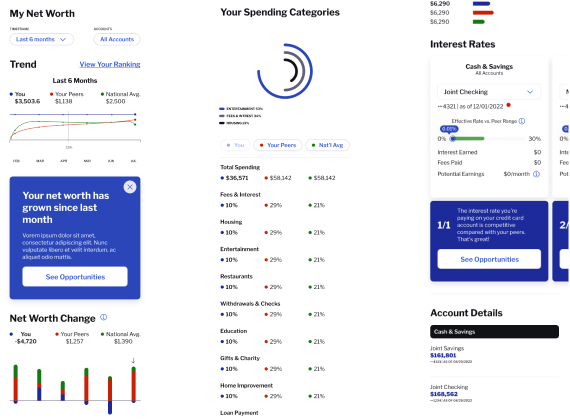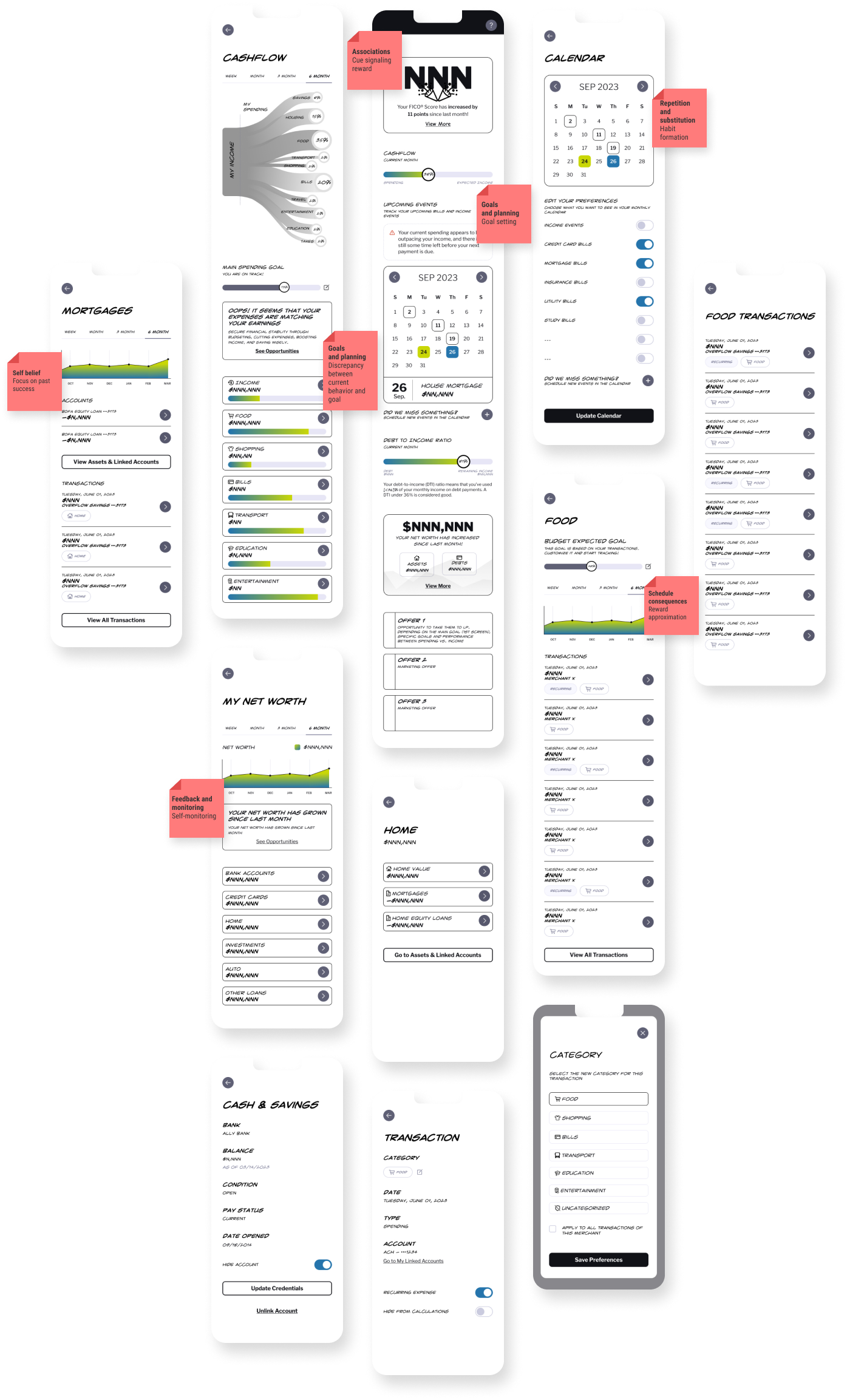Company name: LendingPoint (US)/2023
Role: UX Designer
Challenge: Redesign existing tool
This innovative tool was born in response to a growing demand for seamless financial control, empowering users to manage their monetary well-being effortlessly.
In its initial release, the tool provided users with straightforward access to crucial financial data, including assets, net worth, and transaction history, placing key financial insights right at their fingertips.

why?
Addressing these issues is crucial for improving user satisfaction, increasing retention, and ensuring long-term success for the tool.

The tool was facing challenges that hinder user adoption and long-term engagement. One of the primary issues was the lack of a clear value proposition. Users did not immediately understand the benefits of using the tool, making it difficult for them to see its relevance and advantages.
Additionally, the absence of personalization lead to a generic user experience that did not cater to individual needs, reducing overall engagement. The tool’s complexity further exacerbated the problem, making it challenging for users to navigate and use it effectively. As a result, these factors contributed to a low retention rate, indicating that users did not find enough value to continue using the tool over time.
how?
- Gaining a deeper understanding of the target users.
- Ensuring users efficiently access the essential information needed to achieve their objectives within the tool.
- Offering relevant features and options tailored to users’ specific tasks within the app.
- Allowing users to interact with and personalize the tool according to their preferences.
- Encouraging consistent usage and creating a habit of engagement with the platform.

To achieve these goals, the process involved several essential steps:
- Understanding Users and the Product: Conducting research to gain insights into user expectations and how they interact with the tool.
- Identifying User Needs and Personal Goals: Defining what users aim to accomplish and how the tool can support them effectively.
- Recognizing Behavioral Patterns: Analyzing how users navigate and engage with the platform to identify trends and pain points.
- Architectural Refinement: Improving the structure of the tool to enhance usability and ensure a seamless experience.
The research was conducted using various artifacts and methodologies to gain a comprehensive understanding of user behavior. These insights played a crucial role in shaping a strategic approach to refining the product and delivering a more intuitive and effective user experience.
capability
- Do the users have the enough information of the tool to understand how to use it?
- Do they have the knowledge about the benefits of using the tool?
- What specific tools would the users need to do the behavior?
opportunity
- What kind of outcomes are associated with doing the behavior?
- What kind of rewards exist in the process for the users?
- What types of incentives do users perceive there for doing the behavior?
- What type of punishments or negative outcomes exist related to the behavior?
- What are the users goals? What are most important to them?
- Do the users understand that the target behavior will help them with any of their goals?
motivation
- Are the tools for the behavior available?
- What kind of times or schedule constrains affect the behavior?
During the process of defining and designing user interfaces, I applied behavioral techniques and psychological strategies to enhance the user experience. My goal was to make the interface more intuitive and foster habitual engagement with the tool. For instance, I incorporated gamification elements to motivate user behavior, encouraging self-regulation and sustained usage. These strategies were implemented not only to improve usability but also to positively impact key metrics.
In the UI design stage, wireframes went beyond merely illustrating features—they also embedded psychological scaffolding. This ensured that design choices aligned with user behaviors, reinforcing engagement and driving long-term adoption of the tool.
